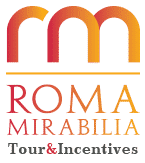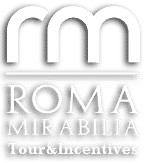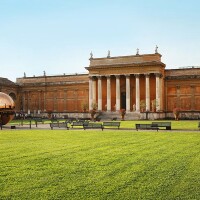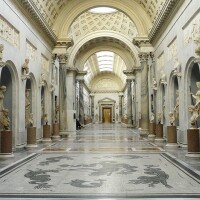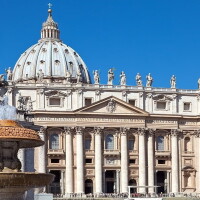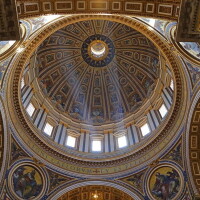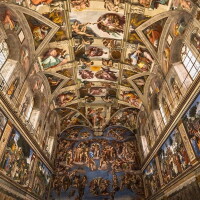The Vatican museums belong to the most visited museums in the world today. The buildings were originally papal palaces built for such Renaissance popes as Sixtus IV, Innocent VIII and Julius II. The long courtyards and galleries, linking Innocent VIII’s Belvedere Palace to the other buildings, house an important collection of antique sculptures, among them many of the great archeological finds from central Italy; including the Laocoön group, the Apollo del Belvedere and the Torso del Belvedere that inspired Michelangelo for his paintings in the Sistine Chapel, the main chapel in the Vatican where Michelangelo realized his magnificent and only fresco works: the Sistine ceiling (1508-1512) and the Last Judgement on the great altar wall (1534-1541). Like Michelangelo, Raphael worked in the pope’s palace from 1508. The works in the private apartments of Julius II’s took over 16 years to complete, and Raphael himself died before its completion. The frescoes express the religious and philosophical ideals of the Renaissance and quickly established Raphael’s reputation as an artist in Rome. From the Sistine Chapel we enter St. Peter’s, the centre of the Roman Catholic faith.
